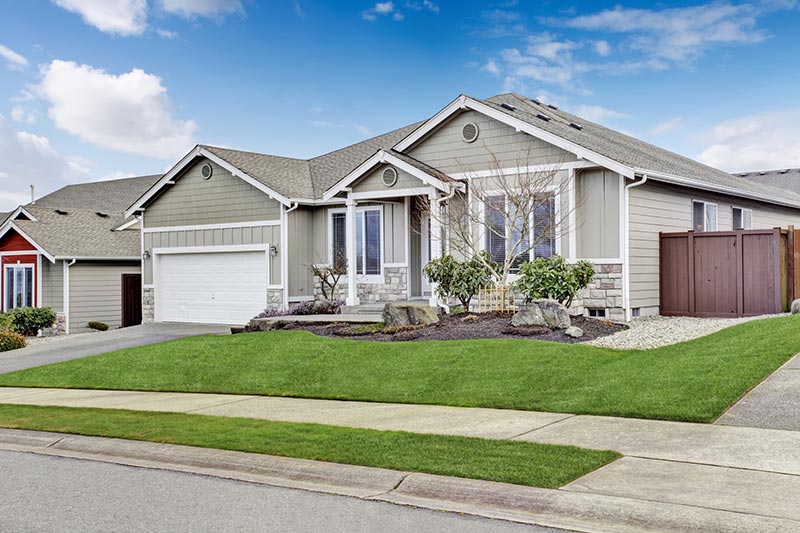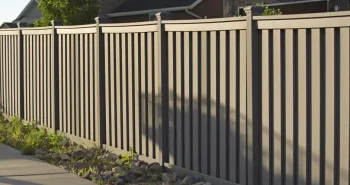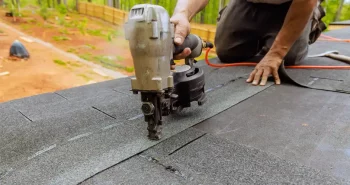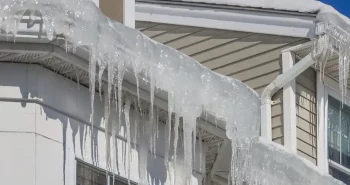Interior renovations are a great way to boost your home’s property value, add some unique features, and modernize outdated designs. Homeowners enjoy interior renovations as it allows them to submerse themselves in the changes daily. However, the outside of your home needs attention too. To make sure that your curb appeal stays high, and your home stays protected, replacing your siding is important. Luckily, this project isn’t a regular occurrence. You only need to replace your siding if it’s 10 to 15 years old or older, or if there are visible signs of damage and deterioration. If you fall into that category, the next thing to ask is: when’s the best time of year for a siding installation?
Siding Replacement and Installation in Different Climates
Due to the affordability, durability, low maintenance, and variety in styles that vinyl siding provides, it’s one of the most popular siding installation options for homeowners. However, the inherent makeup of vinyl means that it can be difficult to install in certain climates. Scorching heat or freezing days don’t create an optimal environment for vinyl installation, as it can create long-lasting compromises in the functionality and overall structure. To better understand the challenges of each season, let’s consider siding installation in the summer, winter, spring, and fall.
High Heat Can Ruin Siding Replacement
Long-term sun exposure is one of the factors that leads to the gradual deterioration of vinyl siding. It will withhold the test of time, but vinyl is a plastic and can mildly morph when exposed to prolong conditions of high heat. While this will not cause a problem once installed on your home, it can be problematic during siding installation.
The high heat can cause the vinyl to stretch and expand. If you install vinyl siding on a scorching day in the summer, the material could end up being as much as five-eighths of an inch longer than it is in winter. This can cause structural challenges and create aesthetic issues when winter sets in. If you are going to get siding installed in the summer, make sure that you work with a contractor that understands how to mitigate the challenges of siding installation in high heat. There are ways to do this—such as not nailing panels in completely and instead, allowing adequate space for even contraction.
When vinyl siding is installed in moderate temperatures, the natural expansion and contraction will not be visually noticeable, nor will it cause problems. Therefore, avoid scheduling siding installation on extremely hot days at the height of the summer.
Freezing Temperatures Create Brittle Siding
Installing siding is also not recommended at the other end of the temperature spectrum. Siding installation performed during freezing weather can have the opposite effect of installations in high heat. Many siding materials will contract to some degree, which skews the overall measurements for the coverage of your home and creates difficulty when securing panels in place. The contraction happens at all dimensions, including width, which could lead to securing panels too tightly. When the weather warms up and they expand again, it could lead to problems with stability of the panels, and they could crack or become dislodged. Upon expansion, the panels can even put pressure on doors or windows that can cause buckling or damage to the overall frame.
Vinyl siding also becomes extremely brittle in winter months, which is fine when it’s already attached to your home as you won’t be putting pressure on it. However, trying to strike a nail through brittle material can lead to cracks, breaks, and wasted money as most siding professionals don’t cover this waste themselves. To avoid problems with siding installation in the winter, don’t try to schedule the job in temperatures below 50 degrees.
Spring Installation Increases Moisture Risk
Springtime brings more stable temperatures, but in many parts of the country that also means more rainfall. While rain itself won’t cause problems to siding that’s already been installed, if it begins to pour in the middle of siding installation you could expose your home to mold. Exposing your home’s sheathing and walls to rainfall is dangerous as it creates a highly favorable environment for mold growth, which can be both detrimental to your health and your home’s overall stability.
With that being said, spring temperatures are ideal and it’s fairly easy to keep an eye on the radar to ensure that a storm isn’t coming. Talk to your siding contractor about choosing the best spring day and be sure to discuss worst case scenarios.
Fall Siding Installations are Optimal
Regardless of the risks of high heat in the summer and moisture exposure in the spring, many homeowners get their new siding installation done during these times. This is often because families have more time in the summer, and they begin to work through their to-do list in the spring. Because of this, opting for siding installation in the fall is ideal.
For one, the lower the demand, the lower the cost. Since most people get siding installation done early, those who wait until the fall have a unique opportunity within the market. Not only are siding contractors more readily available, but many of the siding materials also go on sale in the fall to make way for new inventory. This can lead to heavily discounted prices on both labor and supplies. While you shouldn’t anticipate a huge drop in labor prices, even a small amount of savings on siding installations can be beneficial to those looking to make other renovations throughout their homes.
Another benefit of undergoing siding installation in the fall is that you’ll be well prepared for winter. New siding installation is a great way to make sure your home is insulated properly to keep you protected from the freezing temperatures and temperamental weather. New siding protects your home from moisture damage and helps insulate your home. This insulation will reduce the overall heat loss from inside, which in turn lowers your energy bills. When you wait to replace your siding until after winter, you’re subjecting yourself to drafts and cold air that can seep in due to old siding riddled with gaps.
While many professionals agree that fall is the best time for siding installation, spring, cool summer days, and mild winter days are also acceptable. The key is performing siding installation when there are moderate temperatures. If you’re flexible and you work closely with your siding contractor, you’ll be able to schedule siding installation during any season, so long as you’re open to last minute installation decisions.
Choosing the Best Siding Material for Your New Installation
If your old siding was vinyl, that doesn’t mean your new siding has to be vinyl as well. Replacing your siding with a new installation gives you the chance to completely change the look and feel of your home. Different materials allow for different design factors, which can be a great way to change the overall style of your home. When trying to determine the best siding for your home, consider the most popular options: vinyl, pine and cedar, metal, brick, fiber-cement, and stucco. Each option has different pros and cons, offers unique style, and comes in a variety of colors. Vinyl is one of the most popular siding types, as it is easy to maintain, affordable, durable, and comes in a variety of colors and styles. If you’re unsure of which type of siding to use on your home, talk to the professionals at First Star Exteriors today. Our team of siding contractors will help you determine the best style for your home based on your budget, aesthetic goals, and maintenance needs.
First Star Exteriors carries hundreds of brand name options to give you the best siding for your home, regardless of your preferred material. Our siding professionals will work with you to help determine what works best on your home based on your desired style, overall maintenance preferences, color, and textures. So, regardless of the time of year, when you’re ready to get new siding installed, contact the professionals at First Star Exteriors. We believe there’s a perfect balance between hands-on, personable treatment, quality of work, and speed of delivery. To make sure that our clients are satisfied, we always take the time to fully understand your needs and communicate effectively from the first quote to the last nail. To learn more about our siding options or to get a quote from us today within 48 hours, contact us at (479) 267-4800 or fill out our contact form here.





